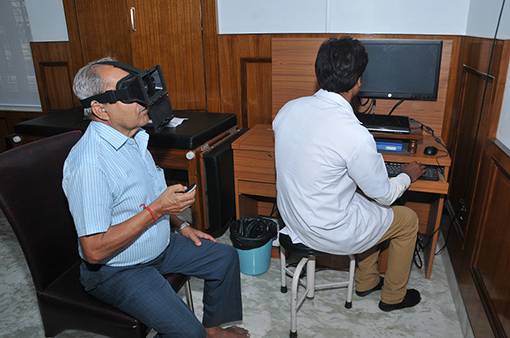Subjective Visual Vertical (SVV)

The subjective visual vertical (SVV) test evaluates otolithic function. Orientation of the vertical and horizontal is a function of the utricle and saccule (otolithic systems) in the vestibular labyrinth and is one of the primary functions of the vestibular system. The subjective visual vertical test evaluates this faculty of the vestibular system. The patient is asked to place a light bar projected on a wall in a dark room without any visual references using a joystick. If the patient has a peripheral vestibular lesion that has not yet been compensated, the patient cannot place the bar perfectly vertically or horizontally and tilts the bar towards the side of the weaker labyrinth. The test requires hardly 10-15 minutes time. This is hence a good, quick and very easy as well as an entertaining test for uncompensated unilateral peripheral vestibular lesions. A further improvement of the test called dynamic visual vertical test evaluates the patient’s ability of placing the bar vertically or horizontally on the background of a moving visual field. The patient is asked to place the bar vertically on the background of an optokinetic stimulus. The optokinetic stimulus is provided by rotating the background clockwise and counterclockwise and the patient is asked to place the light bar vertically on this moving background. Patients having a unilateral vestibular failure are unable to place the bar perfectly vertically even if the peripheral vestibular lesion has compensated. Subjects with normal vestibular function can place the bar within 0 to 2.5°, whereas those with defects in the vestibular system cannot do so. This applies both for the static as well as the dynamic visual vertical tests. Tilting the bar more than 10° is considered to be evidence of very gross abnormality in the vestibular system. By performing the static and dynamic tests the clinician can ascertain whether the otolithic lesion has compensated or not.

